- News
- Reviews
- Bikes
- Accessories
- Accessories - misc
- Computer mounts
- Bags
- Bar ends
- Bike bags & cases
- Bottle cages
- Bottles
- Cameras
- Car racks
- Child seats
- Computers
- Glasses
- GPS units
- Helmets
- Lights - front
- Lights - rear
- Lights - sets
- Locks
- Mirrors
- Mudguards
- Racks
- Pumps & CO2 inflators
- Puncture kits
- Reflectives
- Smart watches
- Stands and racks
- Trailers
- Clothing
- Components
- Bar tape & grips
- Bottom brackets
- Brake & gear cables
- Brake & STI levers
- Brake pads & spares
- Brakes
- Cassettes & freewheels
- Chains
- Chainsets & chainrings
- Derailleurs - front
- Derailleurs - rear
- Forks
- Gear levers & shifters
- Groupsets
- Handlebars & extensions
- Headsets
- Hubs
- Inner tubes
- Pedals
- Quick releases & skewers
- Saddles
- Seatposts
- Stems
- Wheels
- Tyres
- Health, fitness and nutrition
- Tools and workshop
- Miscellaneous
- Buyers Guides
- Features
- Forum
- Recommends
- Podcast
news
Local politician tries telling Facebook followers why more people cycling is a win for everyone... has to close comments "within minutes"; Should TT bikes be banned?; Pro to miss Tour de France after collision with driver + more on the live blog
SUMMARY
No Live Blog item found.
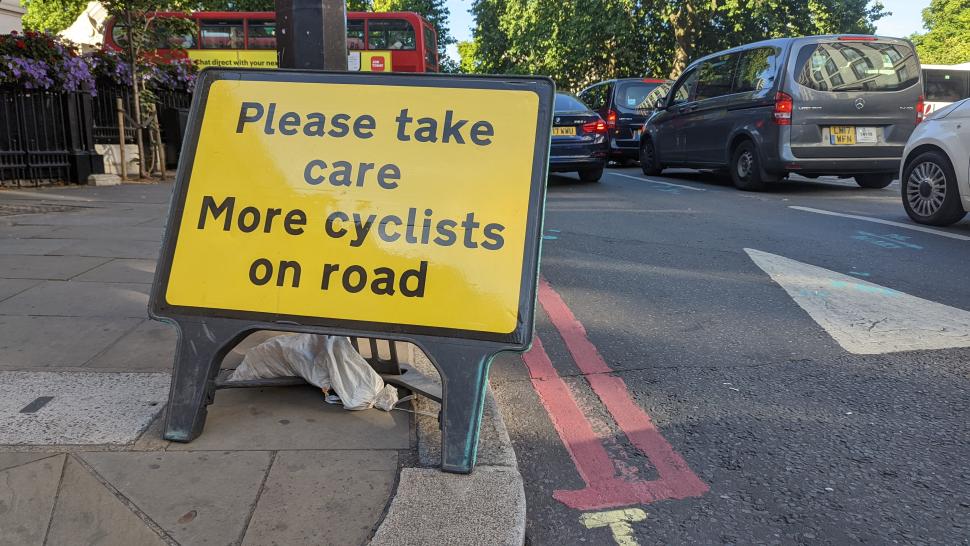 Cycling signs (copyright Simon MacMichael) (6)
Cycling signs (copyright Simon MacMichael) (6)13 June 2024, 14:37
Local politician tries telling Facebook followers why more people cycling is a win for everyone... has to close comments "within minutes"
Nathan Ley is a Liberal Democrat councillor for Abingdon North in Oxfordshire, the local politician taking to Facebook to challenge his followers with an at-length post about the benefits of cycling, not just for those who partake, but for everyone else and society as a whole. Making the case for "why all of us (especially car drivers) should support making it easier for others to do it around town". Seriously? You tried converting people on Facebook?! The home of sensible, nuanced discussion? Tough gig that one...
Nathan reported having to "turn off the comments within minutes" after it "started to kick off with tabloid lines being trotted out", but stood by the fact "we have to challenge people sometimes". So what was the unforgivable pro-cycling writings that attracted the keyboard warriors? Here's the post in full, reshared on the secondary home of sensible, nuanced discussion... Twitter...
I challenged my Facebook followers by posting about cycling. I had to turn off the comments within minutes, but I repost it below and hope you will read - thank you
********************
🚲 𝗥𝗶𝗱𝗶𝗻𝗴 𝗮 𝗯𝗶𝗸𝗲, 𝗮𝗻𝗱 𝘄𝗵𝘆 𝗔𝗟𝗟 𝗼𝗳 𝘂𝘀 (𝖊𝖘𝖕𝖊𝖈𝖎𝖆𝖑𝖑𝖞 𝖈𝖆𝖗… pic.twitter.com/zcJduyls4V
— Cllr Nathan Ley (@LeyNathan) June 13, 2024
Let's dive in. Nathan concluded his post: "When something so simple is so transformative for ALL road users, I'm happy to put my neck on the line for it, and I will sing about it occasionally. Please consider joining us if you can, and make Abingdon a shining beacon of an example — for as long as I'm here I promise I'll try and make it easier for everyone to do so, if you want to."
In the preceding 1,000 words he outlined all the reasons why he's come to this viewpoint, starting with the reasons to ride a bike, before (perhaps even more importantly for those unconvinced) moving on to list reasons why more cycling benefits people who don't cycle themselves.
In the first section, the well-known pros of cycling are given a shout-out: health, environment, cost savings, supporting local businesses, safer roads, community spirit.
"BUT..." Nathan wrote. "Here is why the real winner and why I think we should all care, even if you have no intention of ever jumping on a bike."
"And finally, in a virtuous cycle….Encourages Efficient Public Transport: A decrease in road congestion can also benefit public transport systems. Buses can run more smoothly and on schedule, making public transport a more attractive option for commuters and further reducing the number of cars on the road. It's chicken and egg. If Oxford Bus Company could be guaranteed less traffic then they would invest in more routes, more vehicles, more drivers, and options for everyone would be more plentiful."
Quite outrageous, I know... outrageous enough for a comments section pile-on anyway...
It went down better with Nathan's followers on Twitter at least:
Agree. As you say, it's hard to get that point across in writing. Need to give everyone a free day with an eBike and say "go off, have a play with this" and so many opinions would be transformed.
— Cllr Nathan Ley (@LeyNathan) June 13, 2024
Richard J Law: "Well said. I think that, for the most part, the angry minority really have other issues & just live in a divisive world where they are encouraged by the media to blame others for their problems without the intervention of logic or empathy. Ride on."
Raoul Morley: "This is excellent, I'm a late driver I passed today, and have used a bike my entire life as my main means of transport, and still will. Everyone wins with more cycling, there's less traffic and a healthier and happier population."
Johnny Plectrum: "Unfortunately social media discussions regarding cycle use invariably fail as there appears to be a good percentage of motorists that don't understand that it's not one or the other. Choice is permitted. The right vehicle at the right time is my motto."
13 June 2024, 16:30
Raleigh owner Accell's credit rating downgraded for fourth time in a year, as group's cargo bike company slammed for "shambles" recall of faulty frames
13 June 2024, 15:26
UAE Team Emirates domination sees Adam Yates take Tour de Suisse stage victory
As if Tadej Pogačar needed any more help. As if just being a ridiculously talented freak of a cyclist wasn't enough, his teammates that'll be helping in his aim to reclaim the Tour de France next month aren't half bad either.
So let me get this right, you're bringing Juan Ayuso, Adam Yates, João Almeida, Pavel Sivakov, Marc Soler, Tim Wellens and Nils Politt. As we said earlier, not half bad.
Yates and Almeida had their fun at the Tour de Suisse this afternoon, pulling off a 1-2 finish as the Brit extended his lead at the head of the GC, his teammate setting a ferocious pace up the final climb before reeling back in those who'd tried to go with Yates when he launched his stage-winning move.
UAE Team Emirates en démonstration ! Adam Yates conforte son maillot jaune en remportant la 5e étape du #TourdeSuisse devant João Almeida #LesRP pic.twitter.com/evLsIhIJ5m
— Eurosport France (@Eurosport_FR) June 13, 2024
Those riders in question were Egan Bernal, Enric Mas and an impressive Matthew Riccitello, before British duo Tom Pidcock and Oscar Onley came home 30 seconds back.
13 June 2024, 15:12
Revamped Standert Pfadfinder all-road endurance bike gets full internal cable routing and is handmade in the Czech Republic
13 June 2024, 15:09
"These days, this is how I roll": Cycling nutrition tips from Chris Boardman that I'll happily follow
Long bike riding ‘nutrition’
These days, this is how I roll 😀 pic.twitter.com/SC6iBlrh5L
— Chris Boardman (@Chris_Boardman) June 13, 2024
13 June 2024, 13:58
Police unsure if driver's "lack of vision" or hi-vis and no helmet to blame for "unavoidable" collision that saw motorist pull out and kill cyclist, inquest finds
13 June 2024, 13:26
Pieter Serry's Tour de France dream over after training collision with driver in Belgium
On the 3rd of June I was hit by a car during a training ride. I was transported immediately to the hospital where I was diagnosed with a heavy concussion. Next weeks I’ll need time to recover. Thanks for all the support and good luck to my team! @soudalquickstep
— Pieter Serry (@Pieter_Serry) June 12, 2024
Soudal Quick-Step veteran Pieter Serry, a domestique who has started 17 Grand Tours in his career but never the Tour de France, will not be making his Tour debut this year after being hit by a driver.
The Belgian rider fortunately escaped without any fractures but has a bad concussion, the 35-year-old telling Het Nieuwsblad that while "there is no sign" of the crash except some "minor" cuts and bruises, he is seeing double due to the concussion.
Having ridden the Giro, Serry enjoyed a week off, returning to training last week in the hope of being one of the Soudal Quick-Step riders to make Tour selection from a 10-man longlist, an ambition the crash has now brought a premature end to.
"I hope to be able to start training on the rollers this week," he said. "It remains to be seen when I can get back on the road. It is difficult to set new goals, but I hope that I can do an altitude training course with the team in the summer and ride the classics or the Vuelta again in the autumn."
Elsewhere in the Belgian domestique news round-up, it is believed Victor Campenaerts will be joining Visma-Lease a Bike once transfers can be announced on August 1. It is reported Campenaerts will join at the start of next season with an eye to being a cog in the Dutch outfit's formidable Tour de France line-up, signing a three-year deal.
13 June 2024, 11:40
"Improving public perceptions and expanding diversity": Cycling UK announces new "transformative" five-year strategy
Cycling UK has outlined its five-year strategy aiming to get more people to recognise the wellbeing, health and environmental benefits of more people riding bicycles. With five strategic objectives, the charity will focus on improving public perceptions of cycling, boosting the diversity of cycling, making cycling a more positive experience, increasing transport choice, and further raising the profile of the organisation and increasing its charitable impact.
Noting cycling's place as "another focal point of the culture wars", Cycling UK says it feels a responsibility to create a wider public support for cycling, support that can contribute to safer spaces and persuading policymakers to introduce cycling-friendly policies and investment.
Looking at the numbers that suggest the aims are possible, Cycling UK highlights that 60 per cent of all car journeys in England are under five miles, 77 per cent of the UK agrees that it would be better if more people cycled, and 65 per cent want roads changed to protect cyclists and pedestrians from cars.
> Does cycling policy need a reset after the election?
Sarah Mitchell, chief executive of Cycling UK said: "The next five years is a pivotal time for us to demonstrate the wider benefits of cycling. As some politicians have sought to reframe cycling as a culture war issue over the past year, using rhetoric to divide all road users, we are acutely aware of our responsibility to remind people of the overwhelming positive impact of cycling. We already know cycling is a fantastic transport option for millions of people across the UK, and we want even more people to see how it can improve public health, boost wellbeing and enhance our environment."
To coincide with the announcement, the film above was made, Cycling UK working with author and poet Erin Bolens and production company Manto Films.
13 June 2024, 11:07
Royal Parks cancels Richmond Park time trials over fears cyclists will break 20mph speed limit, after inquest into pedestrian fatality in "speeding" cyclist collision "brought this activity to people's attention"
13 June 2024, 10:13
British Cycling one of more than 200 sport bodies calling on party leaders to use general election to commit to making the UK the most active nation in Europe
Today we’re joining @sportrectweets and more than 200 others in calling on party leaders to #TakeTheLead and prioritise sport and physical activity ahead of next month’s general election 🚴⁰⁰Read more 👇🏼 https://t.co/sj3qxEK9No
— British Cycling (@BritishCycling) June 13, 2024
The coalition of more than 200 athletes, businesses, charities and bodies across health, sport, recreation and physical activity has penned an open letter through the Sport and Recreation Alliance.
British Cycling is joined by Rebecca Adlington, Ugo Monye, Adam Olaore, Darcey Bussell and numerous others in demanding party leaders take the "unique opportunity" presented by an election to prioritise sport and recreational activity.
"To overcome our national health crisis and deliver economic growth, we believe you must commit to the ambition of making the UK the most active nation in Europe and work with the industry to deliver this vision," the letter states.
According to research by the Sport and Recreation Alliance, "Collectively, the sector already saves the NHS £9.5bn every year by preventing illness and in total generates £85bn annually in economic and social value. However, the value generated by the sector could be far greater if the UK reaches and exceeds the activity levels of its European peers."
If the UK became the most active nation in Europe, the research projects:
- Economic growth – by increasing GDP by £3.6bn every year
- Reduced burden on the NHS – by cutting spending on preventable disease by £1bn every year
- An improvement in people's life satisfaction – by increasing wellbeing benefits to the value of £71bn every year.
13 June 2024, 09:04
County counter counts 43 counties on world record-breaking ride
Scott Mitchell from Endmoor in South Cumbria is now the holder of a world record for... most UK counties visited by bicycle in one week, the BBC reports. Scott actually completed the ride last June, but it has now been confirmed by Guinness, the father (completing the ride to raise money for Muscular Dystrophy UK, a condition his son lives with) riding through 43 of England's 48 counties.
The ride started in Cornwall and finished in Lancashire a week later as Scott raised almost £7,300 to raise awareness about the lack of cure for Becker muscular dystrophy.
"More than anything, I need the world to see what I'm doing, why I'm doing it, and to spread the word," he said. "For Alex, the basics are hard — getting out of bed, getting from room to room — but it affects him mentally as well as physically. The progression of his condition is becoming increasingly obvious and impacts every aspect of his life, which is heartbreaking to watch as a parent."
13 June 2024, 08:53
Edinburgh enjoys record number of people travelling by bike
Cycling Scotland reports Edinburgh is the latest city to see a record number of people travelling by bike, more than 2,000 daily bike trips being recorded on Leith Walk during May, following the completion of cycle lanes between Leith and Picardy Place.
The charity reports nine per cent of all journeys on Leith Walk and six per cent of journeys on Melville Street were made by people on bikes, "a level of modal share rarely seen in Scotland".
A total of 219,070 bike journeys were recorded on Leith Walk between January and the end of May 2024, almost double the number recorded over the same time period in 2022 (117,969).
One Leith resident who uses the infrastructure to cycle to work several times a week said it has made her journeys "so much more relaxed".
"I love how it gives me independence and allows me to get about town," Elspeth told Cycling Scotland. "I find getting around by bike is great for my physical and mental health, and I love the passing waves and nods from other people on bikes in the morning."
Rowan Simpson, Monitoring and Development Officer at Cycling Scotland commented: "Yet more evidence that where Scotland builds networks of connected cycling routes, separated from vehicle traffic, more people travel by bike. We know that road safety is the single biggest barrier to more people cycling, and the early success of Leith Walk and City Centre West to East Link underlines the critical role of safe, convenient, separated cycle routes, if more people are to choose cycling for short and medium journeys."
For those of you who have been visiting road.cc for a while, you'll probably remember it hasn't all been plain sailing...
> Zig-zag corners on "moronic" Edinburgh cycleway to be replaced to improve cycle safety
> Cyclists fed up with "ridiculous" lamppost blocking busy cycle lane for five months
Positive signs at last...
13 June 2024, 07:43
Are time trial bikes too dangerous? Tom Dumoulin "absolutely disagrees" with Annemiek van Vleuten's suggestion to use road bikes, claims time trials are "least dangerous" races
The discussion around the safety of TT bikes has been resumed this week, a duo of legendary retired Dutch riders, Annemiek van Vleuten and Tom Dumoulin, disagreeing over whether the specialist aero set-ups are "dangerous" and whether the peloton would be better off simply using road bikes instead.
Van Vleuten — who won gold at the Tokyo Olympics and was a two-time time trial world champion during her career, but also spent a week in hospital with injuries sustained in a collision involving a driver as she trained on a time trial bike in Italy in 2015 — told Dutch news outlet NOS it is "with a heavy heart" she believes "it would be better to ride time trials on regular (road) bikes again".
"Since then [the aforementioned 2015 collision] I have always been aware of the dangers," she explained. "I have never been able to train uninhibitedly on the time trial bike again. Even though you are cycling at 50km/h where no one else is riding. It is very vulnerable: the brakes are stuck. not near your hands.
"You want to win, it's all about seconds, and then you take risks. Especially when you're in that steering wheel and you're throwing yourself down a hill at 80km/h. Then you just have to trust that things will go well.
"The fact is: we ride much faster than ten years ago. It's going faster and faster. I'm sometimes afraid that something super serious has to happen first before the UCI makes changes."
The argument is nothing new, Chris Froome making the case for road bike TTs after his former teammate Egan Bernal suffered a devastating crash while training on his Pinarello time trial bike in Colombia, Froome himself having also suffered career-threatening injuries in a crash while training on his time trial bike at the 2019 Critérium du Dauphiné.
"Is it really necessary for us to have time trial bikes in road cycling?" Froome said two years ago. "Being out on my time trial bike this morning, and in light of recent events, time trial bikes are not really meant to be ridden on the roads the way that we need to ride them in order to be ready."
Tom Pidcock too has said he believes time trial bikes are too dangerous for riders to train on public roads. At the time of the 2022 discussion, Froome's teammate Michael Woods said he believes "the majority" of teams, manufacturers, mechanics and staff would be "pretty happy" ditching TT bikes.
However, Bernal, whose crash sparked plenty of debate about road bike TTs and whether time trial bikes are safe for training on open roads, acknowledged that while it is "more dangerous", the time trial bike is part of the fabric of the sport and "without it cycling wouldn't be the same".
He said: "Time trialling is part of the spectacle of cycling and it's something a lot of riders and fans like. So I think they should stay."
In September, Stefan Küng's bizarre crash straight into barriers at the European Championships prompted former UCI chief Brian Cookson to call on the sport's governing body to crack down on the "crazy trend" of riding head down in time trials, riders sacrificing being able to see where they are going in search of aero gain.
Jumping back to the present day, Tom Dumoulin "absolutely disagrees" with Van Vleuten and co. and does not "understand what is dangerous about time trials", suggesting that riders probably rode head-down less in the past.
"I think it is the least dangerous part in the entire sport of cycling," he said. "Riders fall much more often on road bikes than on time trial bikes. Just add up all the falls. So I don't see a pattern yet, to be honest.
"As a rider, you understand that if you want to look down during time trial, you shouldn't do that on a road with a lot of traffic? I always did my time trial blocks along the canal where no one comes, and certainly no cars. I also rode in hilly landscapes, but then I didn't look down all the time."
The former time trial world champion added that if the discipline were to be moved to road bikes, teams and riders would just look "for other ways to gain profit with even more dangerous bicycle designs".
"Then you end up with far too long stems or strange positions on the bicycle that are completely unsuitable for riding in a peloton," he said.
Dan is the road.cc news editor and joined in 2020 having previously written about nearly every other sport under the sun for the Express, and the weird and wonderful world of non-league football for The Non-League Paper. Dan has been at road.cc for four years and mainly writes news and tech articles as well as the occasional feature. He has hopefully kept you entertained on the live blog too.
Never fast enough to take things on the bike too seriously, when he's not working you'll find him exploring the south of England by two wheels at a leisurely weekend pace, or enjoying his favourite Scottish roads when visiting family. Sometimes he'll even load up the bags and ride up the whole way, he's a bit strange like that.
Latest Comments
- Destroyer666 2 hours 9 min ago
"...the beeswax-based covering magically shuns off whatever might be lurking in the corners. Even after multiple rides, when the bars rattled about...
- chrisonabike 3 hours 24 min ago
I've always wondered - why does the one-armed person in the cloak have their hand in the one-armed person with the cane?
- David9694 3 hours 31 min ago
t-boned
- Rendel Harris 4 hours 52 min ago
I didn't know the blue RA saddle was a holy grail - I had a 1986 RA bought new in 1987 with a blue saddle that lasted me very well until 2002 when...
- newbankgyratory 5 hours 2 min ago
Solution: Put these up everywhere. Source: https://www.gov.uk/guidance/the-highway-code/traffic-signs
- Rendel Harris 5 hours 59 min ago
Glad you like it - this week was the first proper commuting week since I got it, 250kms nice and warm but not boiled, indeed - and when the...
- Rendel Harris 7 hours 32 min ago
As what you have said is demonstrably untrue, given that the event is organised and has been for the last four years by a professional events...
- chrisonabike 8 hours 46 sec ago
Accessibility issue. Of course by necessity / co- evolution the Dutch generally provide a fairly "one size fits standard bikes" parking solution -...
- Steve K 9 hours 15 min ago
I'm there now too, if anyone wants a follow/wants to follow me. @cyclingtheseaso
- Shepton 9 hours 51 min ago
I totally agree. I used to commute through Long Ashton and only started getting agro from motorists when the pavement was made to be a shared path....
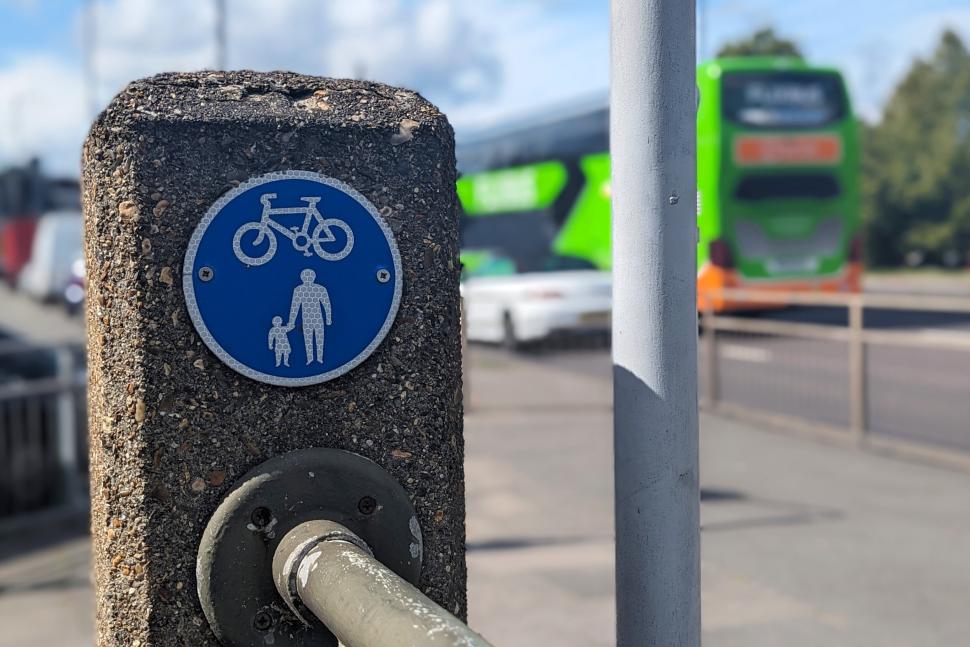
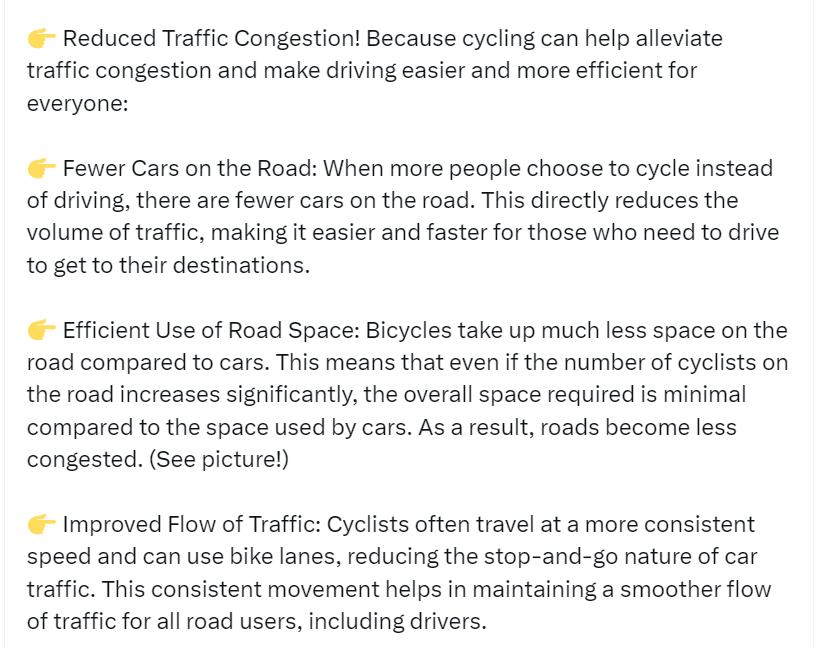
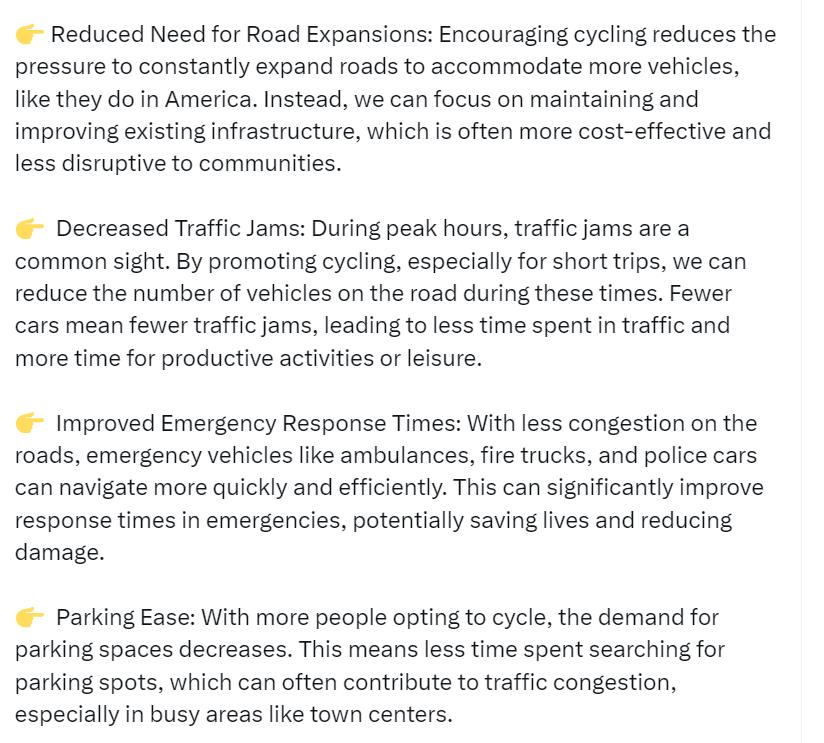
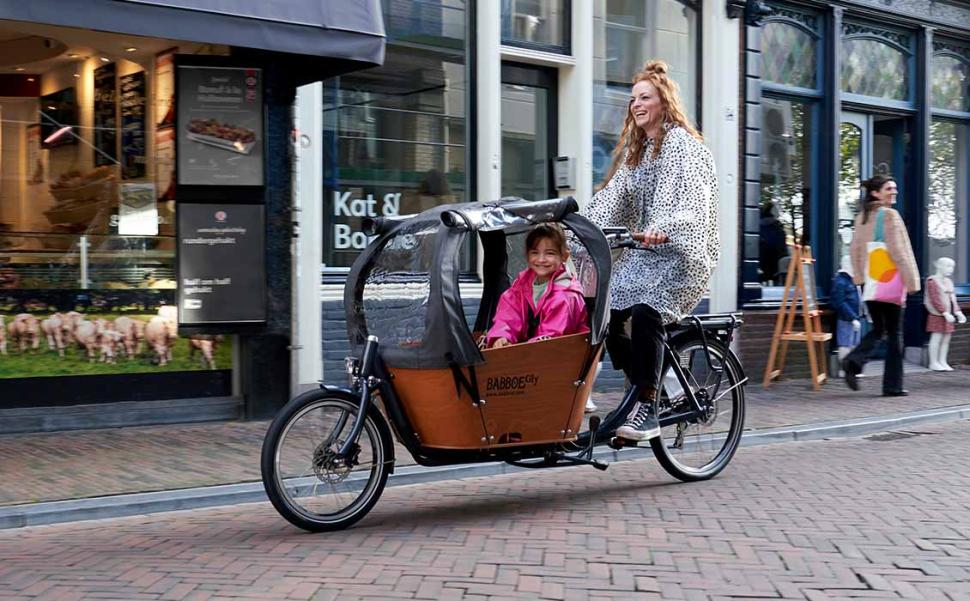
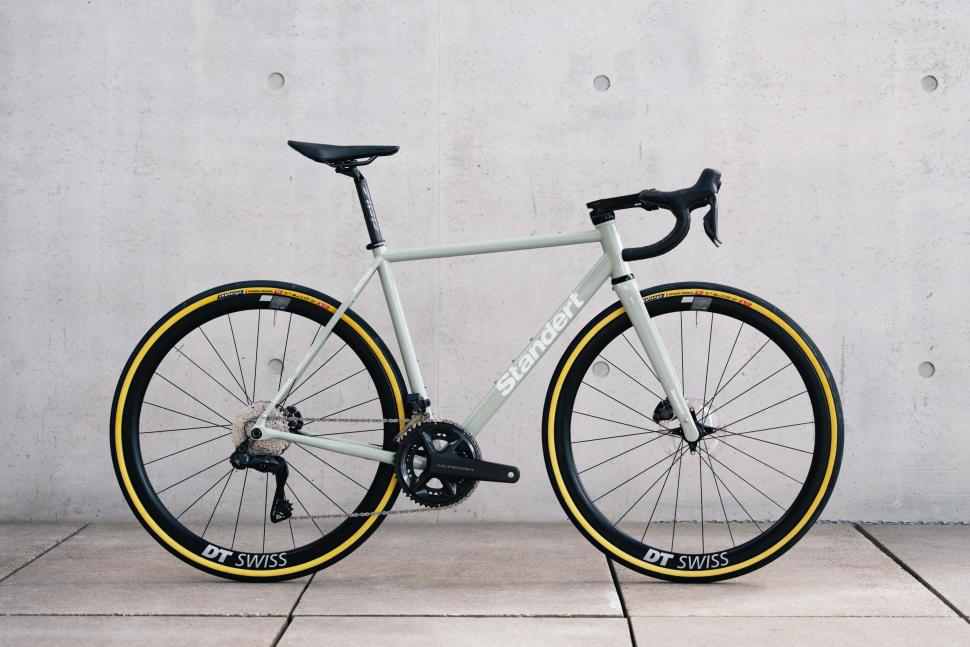
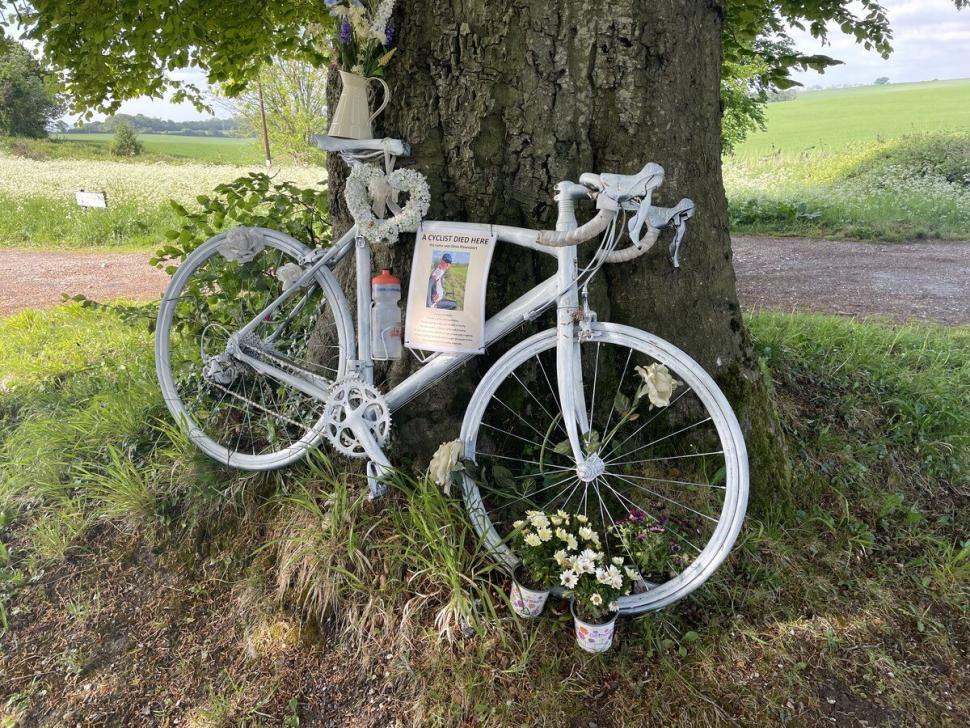


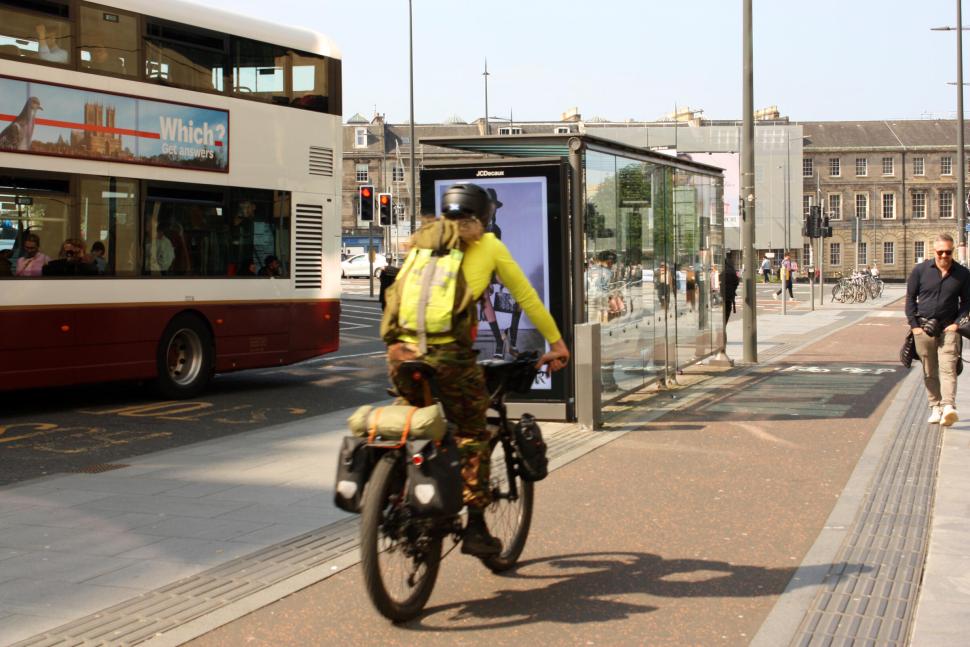
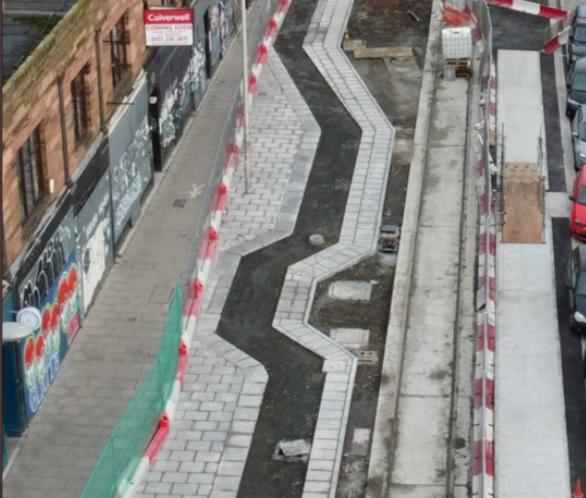
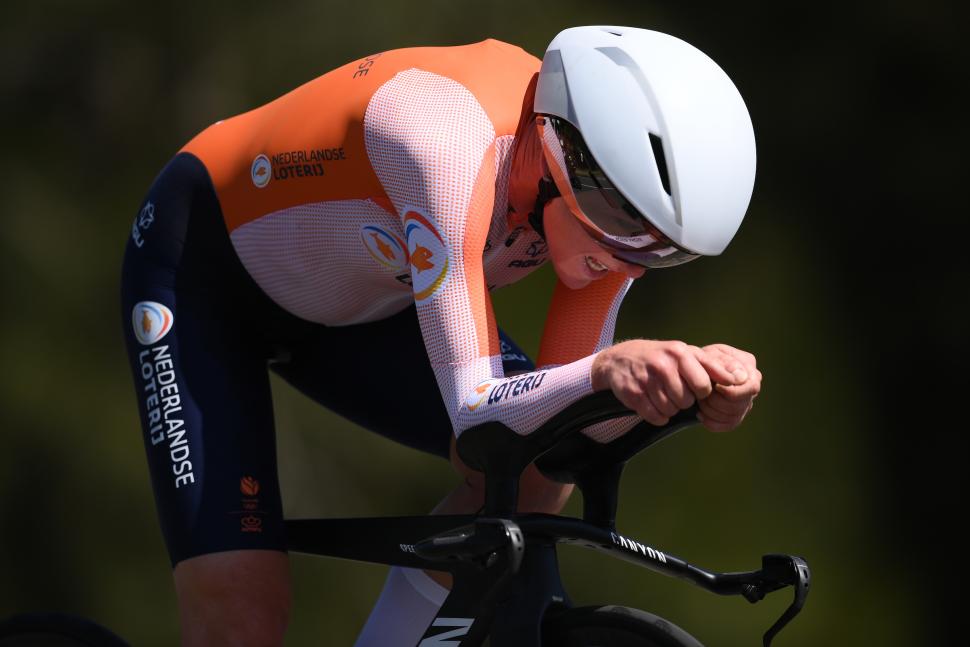

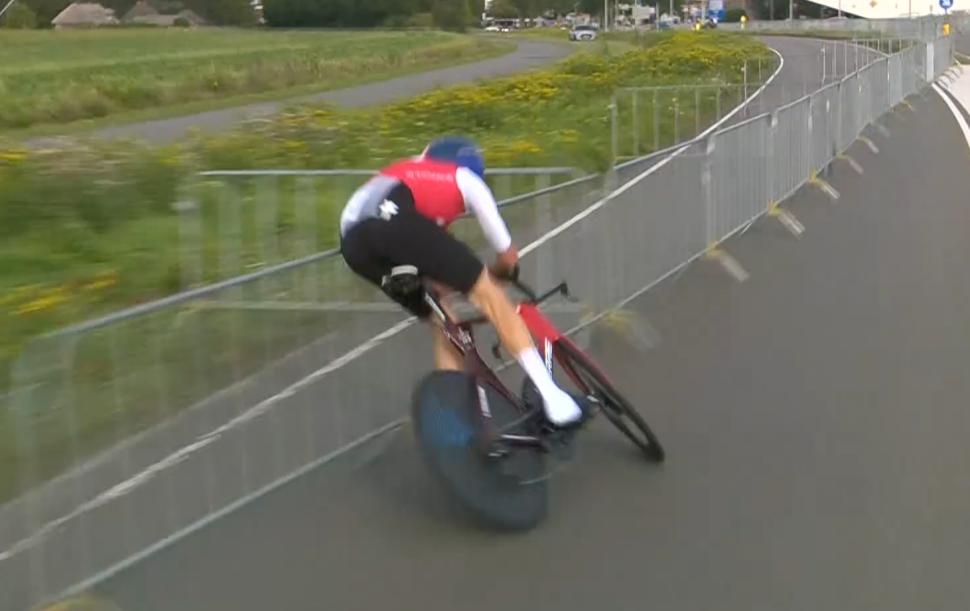
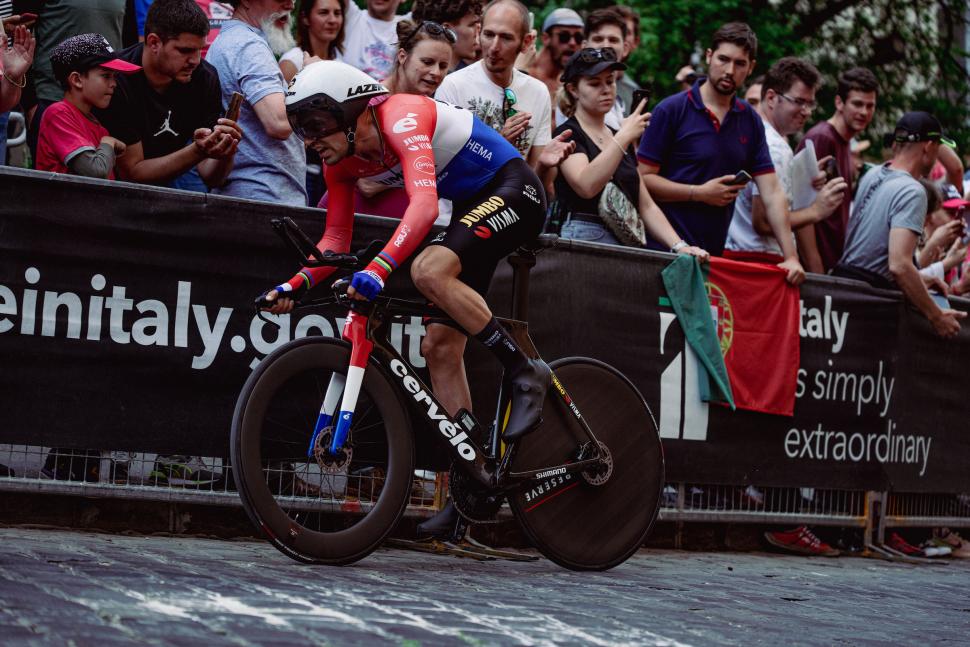
Add new comment
41 comments
I don't entirely understand this sentence. What is the relevance of the doctor driving past there every day as part of her commute?
Is the implication that drives there every day so she is fully aware that hedges etc could block the view and always takes that into consideration? Because on the face of it, she's almost said "Well, I drive there every day and I've never seen cyclists there before".
I suspect it has all these meanings. e.g. "I know this road really well" (so there must have been something very unusual to cause a collision - with an undercurrent of "If I've done it tons of times without trouble it can't be my fault, can it?").
Or you could read it as "got complacent" - something which had some degree of hazard has become commonplace. No issues occurred before, so maybe done with less sense of caution / on autopilot.
Maybe even "I am a doctor - I have to drive this route (as opposed to e.g. recreational cyclists, choosing to cycle)".
Sadly it's possible to imagine the scenario too easily - without attributing malevolence or "DGAF". Because the car had stopped the cyclists proceeded (their right of way, and otherwise you'd never pass in front of a motor vehicle...) Speculating but presumably the coroner saw the driver's failure to properly or effectively observe before making a manouever as "a moment of inattention / distraction" and humanly understandable - given the doctor regularly drove the route. (Perhaps they were working 12 hour shifts, saving lives etc...)
Then it's "sadly these things happen. One-off tragic accident etc." (The latter because the article doesn't say they made any recommendations about the junction design etc.)
every other day the cyclists were not there, so she was surprised by their presance. If anything it points to complacency. The cyclists were riding two abreast, the second cyclist would have been nearly as far out as a car. But a car would be travelling faster and so would need to be seen further away. It all points to failing to look, properly. If it was really impossible see past the tree/hedge/whatever. We would be seeing collsisions there between motor vehicles all the time.
London Dynamo TTs that take place on traffic free roads before Richmond Park opens to vehicles cancelled by Royal Parks over 'saftey concerns'
https://www.instagram.com/p/C8IoGMdopaN/
Is there a list of the 43 counties? With all the local government reorganisation over the last 50 years, I am interested in what counts as a county? (Also, when I've got five minutes I'm going to work out how many I managed in the week I rode from Sunderland to Liverpool via South London.)
Alex Dowsett said it just needs a rule change on position.
The most aero position is with head close to hands, with hands flat you put your head down and so you are looking down.
If you change the angle so you are bringing hands to head then visibilty is good.
A reminder that the door zone is bigger than you might think...
https://youtu.be/louKInpTBEA?feature=shared&t=30
TTs are only safe because everyone is separated out rather than riding in a bunch. That doesn't mean that they wouldn't be safer if ridden on road bikes, and also ignores the issue of training on TT bikes on open roads.
Also
Um, yeah - I think you have a bit of a base rate error there.
I think his point is a single TT crash inevitably leads to calls that something must be done to make this "incredibly dangerous" part of cycling safe. Yeah tell the riders to look where they're going for a change could be a start.
Versus the multiple bunch crashes that happen in every road race stage where people regularly break bones and it's just ah that's racing in cycling mate.
Whatever his point was, it doesn't change the fact that it was a statistically illiterate comment.
Pages